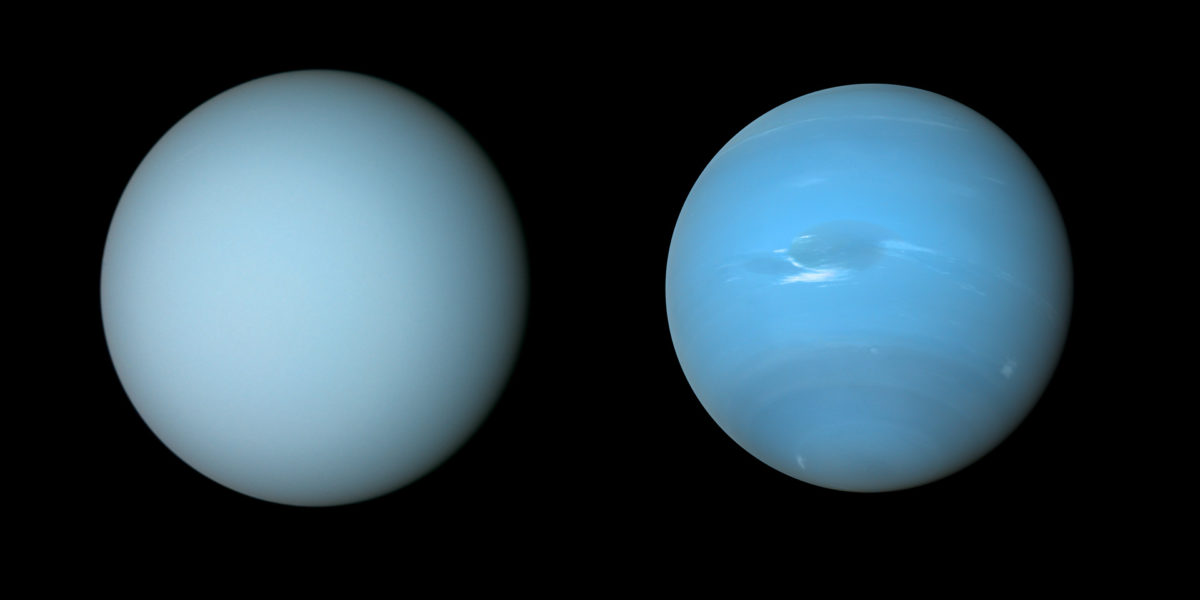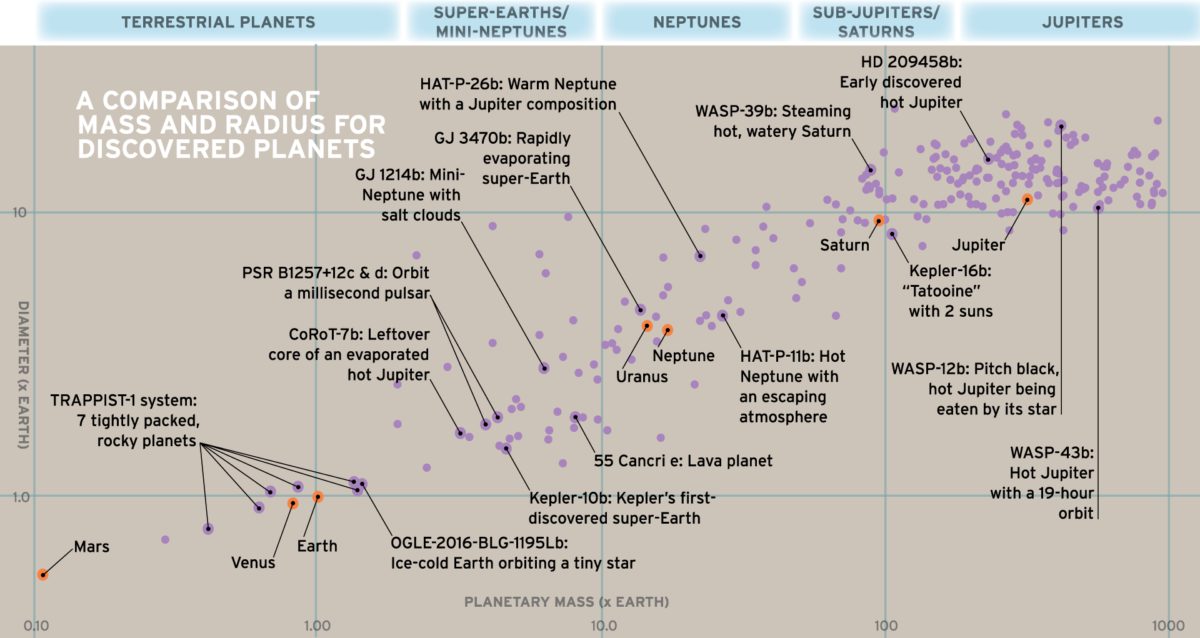Emily Lakdawalla • Mar 12, 2019
The March Equinox Issue of The Planetary Report Is Out!
Inside the Ice Giants
I’m very pleased to announce the publication of the March Equinox issue of The Planetary Report: “Inside the Ice Giants.” The print issue shipped to members yesterday!
I’ve been intrigued by the blue planets Uranus and Neptune since childhood, and I knew as soon as I took on the role of editor that I’d want to give these planets the respect they deserve with a feature article about what’s changed at Uranus and Neptune since the Voyager flybys and how we might explore them in the future. Amy Simon, who leads the Hubble Space Telescope effort that photographs these beautiful worlds at every opposition, wrote that feature for you.
To accompany Simon’s article, I asked image processing artist Björn Jónsson to take another look at the Voyager 2 images of Uranus and Neptune and compare them directly in size and color. Here’s what he came up with:

One of the reasons that planetary scientists want to explore our solar system’s ice giants is that mini-Neptune-sized worlds are the most common ones discovered by the Kepler mission, yet we know little about them. In her feature article, Hannah Wakeford of the Space Telescope Science Institute presents what we have managed to learn about what these super-Earths or mini-Neptunes are made of. We get a quick tour of some of the fascinating diversity of extrasolar planets.

Accompanying Wakeford’s article is a still version of Ethan Kruse’s delightful Kepler Orrery, the animated version of which you can see here.
In this issue’s pages you’ll also get updates on Planetary Society projects from Deep Drill to LightSail to our advocacy efforts in Washington. You’ll also learn about a crucial planning effort that has been a long time coming. In “Your Place in Space,” Bill Nye presents you The Planetary Society’s strategic framework [link], which clarifies our mission, our vision, and the scope of our activities. I’m excited to do the work to fulfill those plans through the coming five years.
The Planetary Report is free and open-access. It is made possible through the generous support of our members. If you’d like to support our work to bring the wonders of other worlds to the public, I encourage you to join or donate.
The Time is Now.
As a Planetary Defender, you’re part of our mission to decrease the risk of Earth being hit by an asteroid or comet.
Donate Today

 Explore Worlds
Explore Worlds Find Life
Find Life Defend Earth
Defend Earth

